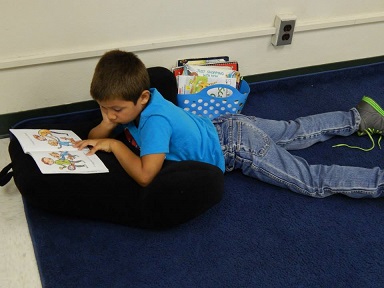All-Important Evidence, Part 1 of 2
Join Our Community
Access this resource now. Get up to three resources every month for free.
Choose from thousands of articles, lessons, guides, videos, and printables.

Fans of courtroom television recognize that evidence makes a big difference. Regular watchers of reality TV courtroom dramas can predict with certainty which cases are likely to be thrown out. It's a simple question of evidence. When settling disputes, exacting television judges have little sympathy for plaintiffs or defendants who come to court unprepared. If an impatient judge asks for evidence, the parties involved better produce it while the cameras are rolling, or else. Without corroborating evidence in the form of photographs, legal documents, bank statements, or receipts, the judge most often dismisses claims with an exasperated swing of the gavel.
Evidence is important in the academic world, too. When students read, write, and speak, they must be able to refer to text evidence. The Common Core State Standards emphasize the importance of evidence. In fact, the word evidence appears several times in the Anchor Standards for Reading (numbers one and eight), Anchor Standards for Writing (numbers one and nine), and Anchor Standards for Listening and Speaking (numbers three and four). The Common Core State Standards also provide more specific grade-level expectations; however, whatever the students' ages, they have to build skill with text evidence. Primary-grade students begin by noting key details, and intermediate-grade students work with the text in more sophisticated ways. To succeed as 21st-century learners, students must be prepared to locate and use evidence in a text (National Governors Association Center for Best Practices, 2010).
Each time students engage with text, they have an opportunity to produce evidence. When they look for answers to literal-level questions, identify key details, search for clues to make inferences, piece together information to summarize or synthesize, or gather insights about the author's craft, they have to return to the text. Revisiting the text, rereading it, and reflecting on it empower students to say with confidence, "I know because the text tells me so!" The text may provide evidence directly or indirectly, but it is the source that students must return to in order to defend their beliefs.
Teachers have long recognized that readers must be able to use evidence from the text to explain their thinking; therefore, it is not surprising that several of the comprehension skills listed on the CAFE Menu explicitly state that students return to the text. The emphasis on textual evidence appears in several strategies under the Comprehension section of the menu. These strategies are: "Make and adjust predictions; use text to confirm;"; Infer and support with evidence;"; Determine and analyze author's purpose and support with text; and Compare and contrast within and between text (Boushey & Moser, 2009).
As part of their instructional routine, teachers can highlight the importance of text evidence. With both literature and informational text, teachers must regularly ask text-dependent questions to direct students back to the reading. To introduce and reinforce the importance of text evidence throughout the year, teachers might plan a series of focus lessons based on their students' needs. These can include topics such as what text evidence means, why it is important, how to locate it in a text, how to quote the text, and more. Drawing on student input, teachers can capture students' ideas about text evidence on anchor charts. Before long, the use of text evidence will become "extremely evident" in students' reading, writing, and speaking.
References
Boushey, G., & Moser, J. (2009). The CAFE book. Portland, ME: Stenhouse.
National Governors Association Center for Best Practices, Council of Chief State School Officers. (2010). Common Core State Standards for English Language Arts & Literacy in History/Social Studies, Science, and Technical Subjects. National Governors Association Center for Best Practices, Council of Chief State School Officers, Washington, DC.






